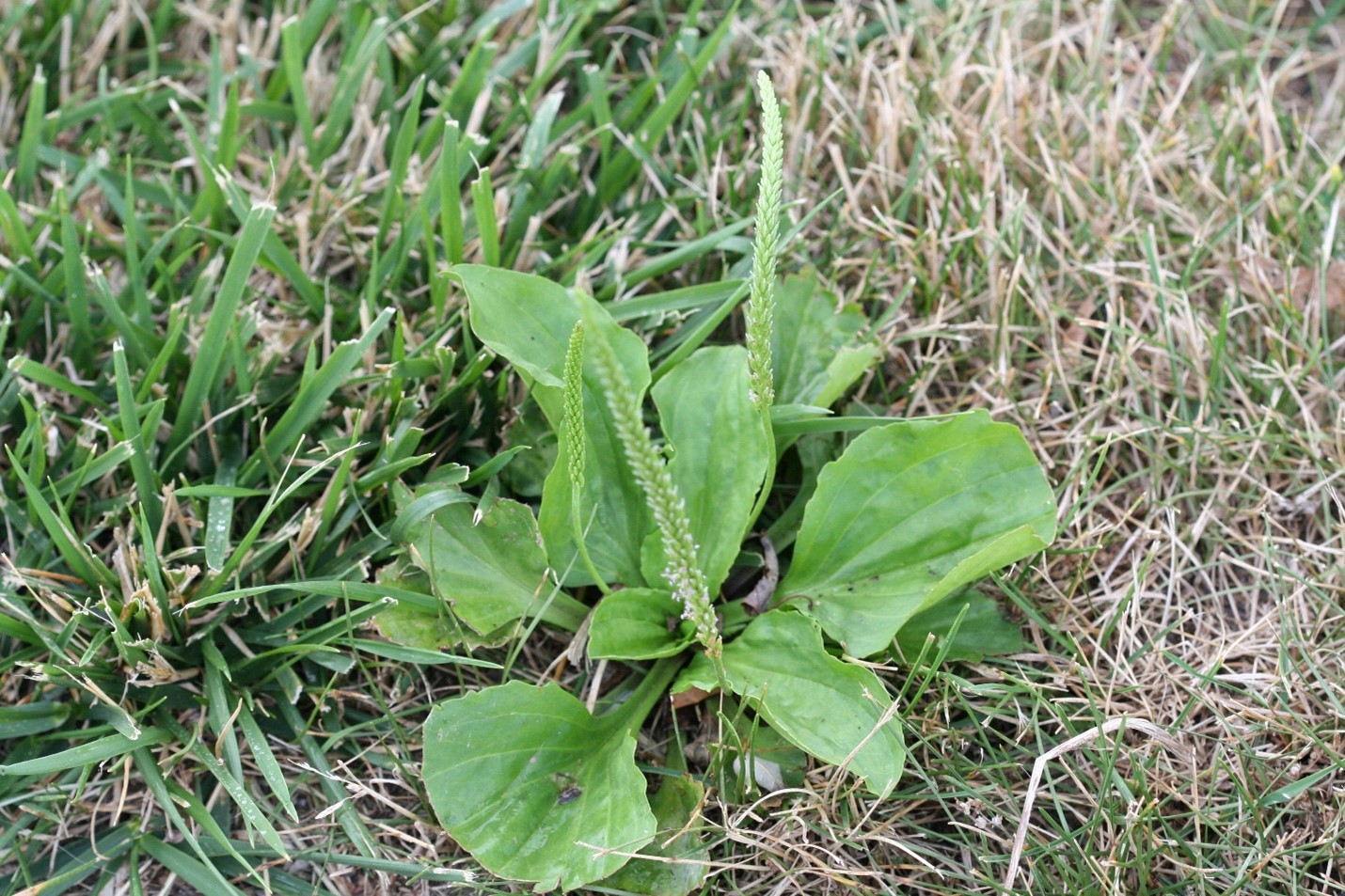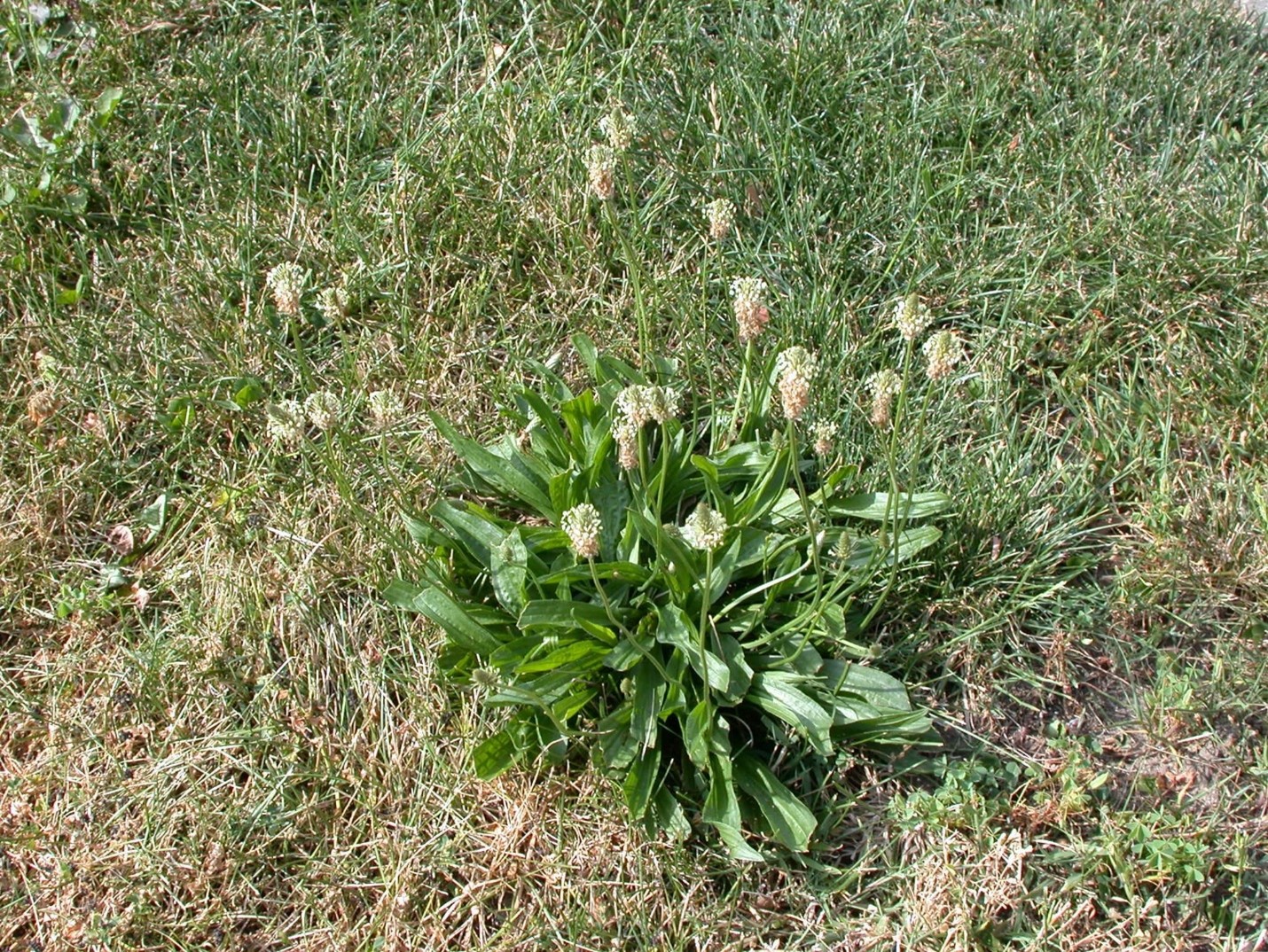Issue 5, June 29, 2023
A Few More Weeds That Do Well in Drought
Common Purslane (Wild Portulaca) (Portulaca oleracea)
This warm-season annual broadleaf reproduces by seeds and spreads by rooting stem pieces. Common purslane germinates late in the season and forms a long taproot with fibrous lateral roots. The stems are succulent, smooth, fleshy, usually purple–red, and may root at lower nodes. The stems are many-branched, reach up to 24 inches long, and grow in a prostrate fashion to form mats. The leaves are alternate to nearly opposite, wedge-shaped (rounded at the tip and narrowed at the base), up to 1-1/4 inches long, thick, fleshy, and smooth and are often clustered near the ends of branches. The yellow flowers are borne individually in the leaf axils or clustered at the ends of branches. There are five petals. The fruit is a globular capsule. Flowering occurs from July through September. Common purslane thrives in sunny, fertile, sandy soils and can be troublesome in late-summer seedings. It tolerates poor, compacted soils and once established, drought.

Common purslane, Michelle Wiesbrook, University of Illinois.
Nimblewill (Muhlenbergia schreberiI)
This warm-season perennial is often found in older, moist turf areas in shady settings but tolerates full sun. It becomes quite noticeable when cool season turfgrass goes dormant. It spreads by seeds and spreading stems (stolons). In turf, nimblewill forms dense patches, often a foot or more in diameter. It has fibrous roots. When actively growing, nimblewill produces grayish to bluish green, short, flat leaves up to 2 inches long. The long, slender flower stalks appear in the late summer. They are borne both at the ends of stems and in leaf axils and are 2 to 6 inches long and cylindrical. When dormant (mid-autumn through mid- to late spring), nimblewill is a faded, dull brown; the patches tend to appear fuzzy, somewhat resembling a scouring pad. These patches are especially apparent when cool-season turf is green and actively growing in spring and autumn.

Nimblewill, Michelle Wiesbrook, University of Illinois.
Broadleaf Plantain (Plantago major) and Blackseed Plantain (P. rugelii)
These cool-season perennials reproduce by seeds. These plantains form a spreading or upright basal rosette of broadly oval leaves with a short taproot and fibrous roots. The leaves are broad-oval, pubescent or smooth, and dark green. The petioles can be reddish or purplish. The leaves are up to 10 inches long and 6 inches wide, the margins entire or wavy, and the veins prominent and parallel. Plantain flowers are numerous, inconspicuous, and small. They are borne in dense clusters at the upper ends of leafless flowering stalks and appear like fingers or rattails. They grow 8 to 20 inches tall from May to September. Blackseed and broadleaf plantains occur in lawns throughout the growing season. They tolerate some shade, low mowing, low fertility, compacted soils, and dry sites but prefer fertile, moist soils.

Broadleaf plantain, Michelle Wiesbrook, University of Illinois.
Buckhorn Plantain (Plantago lanceolata)
This cool-season perennial reproduces by seeds. Buckhorn plantain forms a spreading or upright basal rosette of narrowly oval leaves that grow above a long, sturdy taproot with lateral branches. Leaves of buckhorn plantain are sometimes twisted and curled, dark green, and up to 1-1/2 inches wide and 8 inches long. The tips are sharp and the veins prominent and parallel. Buckhorn plantain forms many small, whitish tan flowers that are tightly clustered at the ends of long, hairy stems. The inflorescences are conelike spikes resembling a bullet. The flower stalks are 6 to 30 inches tall, and the flowers occur from May through October. Buckhorn plantain occurs commonly on drier sites, on neutral to basic soils, and in low-quality turfs of low to moderate soil fertility throughout the growing season. It can tolerate compacted soils and low mowing heights.

Buckhorn plantain, Michelle Wiesbrook, University of Illinois.
Field bindweed (Convolvulus arvensis)
This perennial weed reproduces by seeds and rhizomes. The stems are smooth, slender, and twining. Stems spread over the soil surface or turfgrass and also climb on objects, such as other plants. The leaves are alternate and ovate, and they have basal lobes (arrowhead shaped). The flowers are pink or white funnel-shaped tubes, produced June to September. This plant can persist in many cultivated and uncultivated environments and is difficult to control because of its extensive root system.

Field bindweed, Michelle Wiesbrook, University of Illinois.
Controlling these weeds
In established lawns, populations of these weeds can be managed by maintaining proper turf density. However, in hot and dry conditions, turfgrass may be allowed to go dormant. Fertilize in the fall. Small populations of plantains may be removed by hand, removing as much of the taproot as possible. Common purslane plants are easily pulled but destroy or physically remove the stems, as they may root in open soil. Physical removal of bindweed and nimblewill will be more challenging due to the rhizomes or stolons present. For best results, apply postemergence herbicides in late spring through midsummer when plants are young and actively growing. Applications for many weeds could extend into autumn even. Keep in mind that dry conditions may result in less than stellar control and a second application may be warranted. Preemergent herbicides will prevent emergence next year. Carefully read and follow label directions.
-
More information on these weeds can be found here:
- Common Purslane
- Nimblewill
- Plantain
- Bindweed
For assistance with identification, consult with your local University of Illinois Extension office or the booklet, “Identifying Weeds in Midwestern Turf and Landscapes”. You may also submit plant samples to our Plant Clinic located in Urbana.
Author:
Michelle Wiesbrook